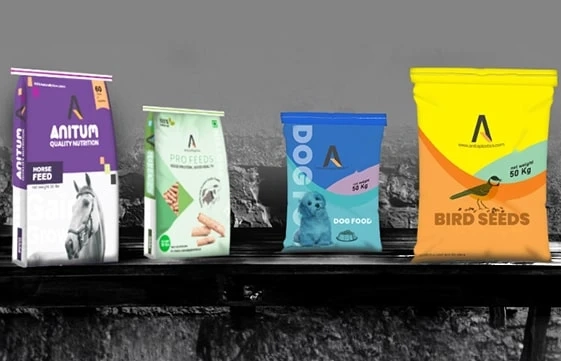Introduction
In the realm of packaging, BOPP (Biaxially Oriented Polypropylene) bags have emerged as a notable contender, offering a blend of durability, cost-effectiveness, and environmental friendliness. This blog aims to compare BOPP bags with traditional packaging materials like paper, cloth, and plastics, particularly highlighting their application in sectors such as animal feed packaging.
Overview of Each Material
BOPP Bags: BOPP bags are known for their robust structure, thanks to the biaxially oriented polypropylene. These bags are widely used in various industries, including animal feed packaging, due to their resistance to moisture and excellent print quality.Paper Packaging: Paper packaging, often used for lightweight products, is appreciated for its biodegradability. However, it may not be suitable for heavy or moisture-sensitive products like animal feed.Cloth Packaging: Cloth bags, made from materials like cotton or jute, are reusable and eco-friendly but lack the structural strength needed for heavier items.Traditional Plastics: Traditional plastics, such as PE and PVC, are common in packaging due to their low cost and versatility but raise environmental concerns due to their non-biodegradable nature.Cost-Effectiveness
BOPP Bags: BOPP bags, while slightly more expensive initially, offer long-term cost savings due to their durability and reusability, particularly in bulk storage and transport of products like animal feed.Paper Packaging: Paper is generally cheaper but may require additional layers or treatments for strength, which can increase costs.Cloth Packaging: The upfront cost of cloth bags is higher, but they offer savings over time due to their reusability.Traditional Plastics: Traditional plastics are cost-effective initially but lack the durability of BOPP bags, leading to frequent replacements.Strength and Durability
BOPP Bags: The strength and tear resistance of BOPP bags make them ideal for heavy-duty applications, such as animal feed packaging, ensuring product safety during transportation and storage.Paper Packaging: Paper is prone to tearing and damage, especially when exposed to moisture or heavy loads.Cloth Packaging: Cloth bags can sustain wear and tear to some extent but may not hold up under the weight of bulk items like animal feed.Traditional Plastics: Although they are relatively strong, they are prone to punctures and environmental degradation.Environmental Impact
BOPP Bags: BOPP bags are recyclable, reducing their environmental footprint. Their durability also means less frequent replacements, contributing to less waste.Paper Packaging: Paper is biodegradable but raises concerns about deforestation and the energy-intensive production process.Cloth Packaging: Cloth bags are sustainable but require significant resources for production, including water for growing cotton.Traditional Plastics: Traditional plastics contribute significantly to pollution and are not typically biodegradable, posing a major environmental concern.Industry-Specific Applications
Different industries prioritize different factors in packaging. For instance, in the animal feed industry, the packaging must protect the contents from moisture and pests, making BOPP bags a preferred choice due to their strength and barrier properties. In contrast, lighter, less durable materials like paper or cloth might be chosen for less demanding applications.
The Future of Packaging Materials
The future of packaging lies in balancing functionality with environmental sustainability. Innovations in materials like BOPP are paving the way for more sustainable packaging solutions without compromising quality or functionality.
Conclusion
In conclusion, while each packaging material has its unique advantages, BOPP bags stand out for their strength, cost-effectiveness, and reduced environmental impact. They are particularly well-suited for challenging applications like animal feed packaging, where durability and protection against the elements are paramount. As the industry moves towards more sustainable practices, the role of BOPP bags will likely become even more significant.
We invite readers to share their experiences and preferences regarding packaging materials. Please get in touch with us for more information on BOPP bags and their application in industries like animal feed packaging.


